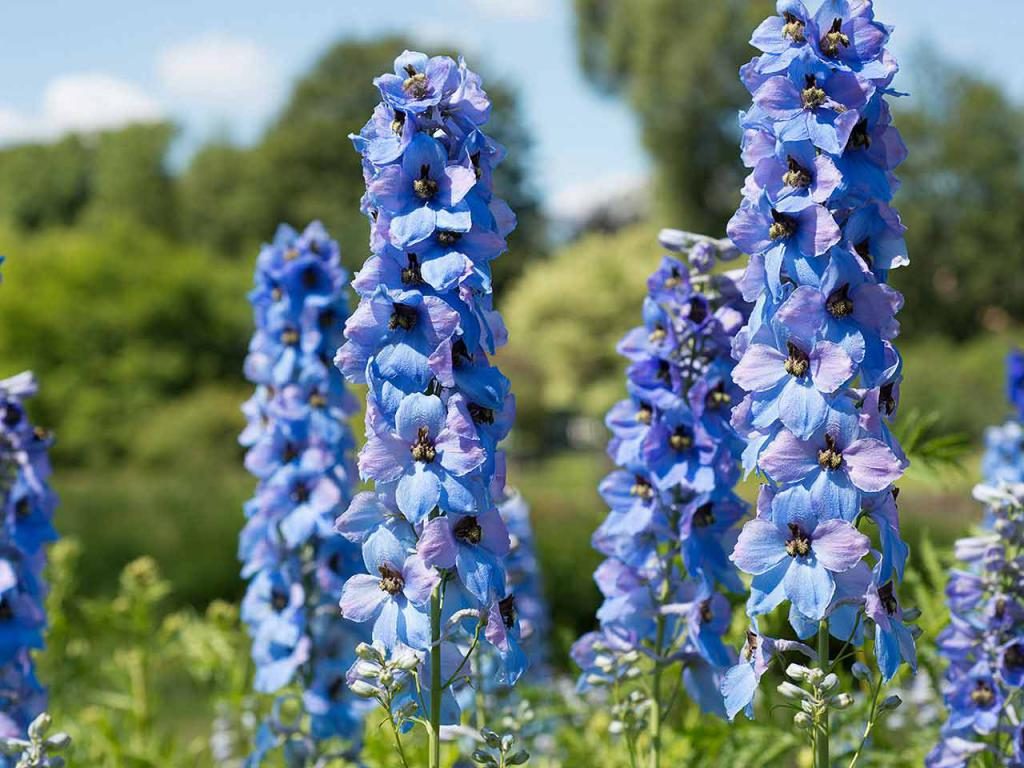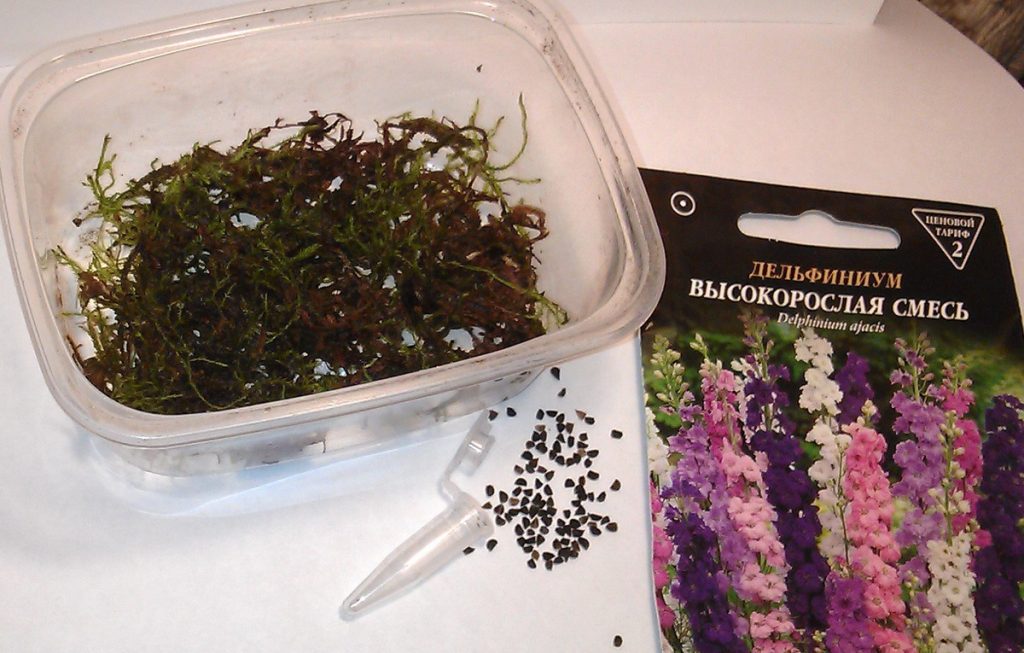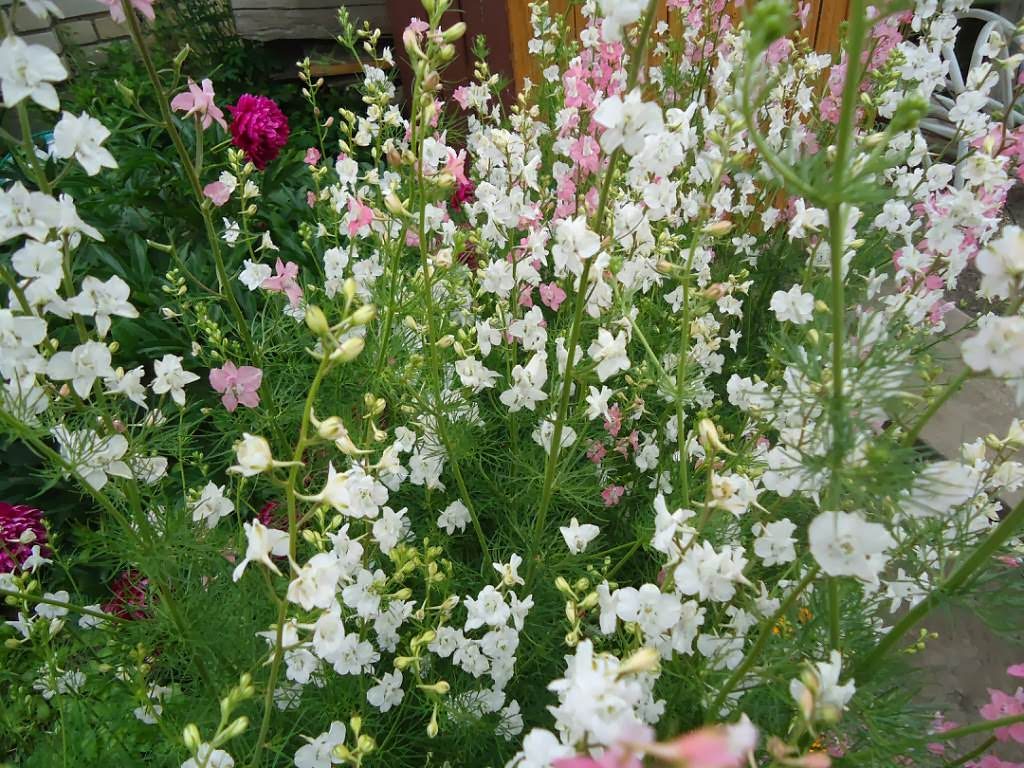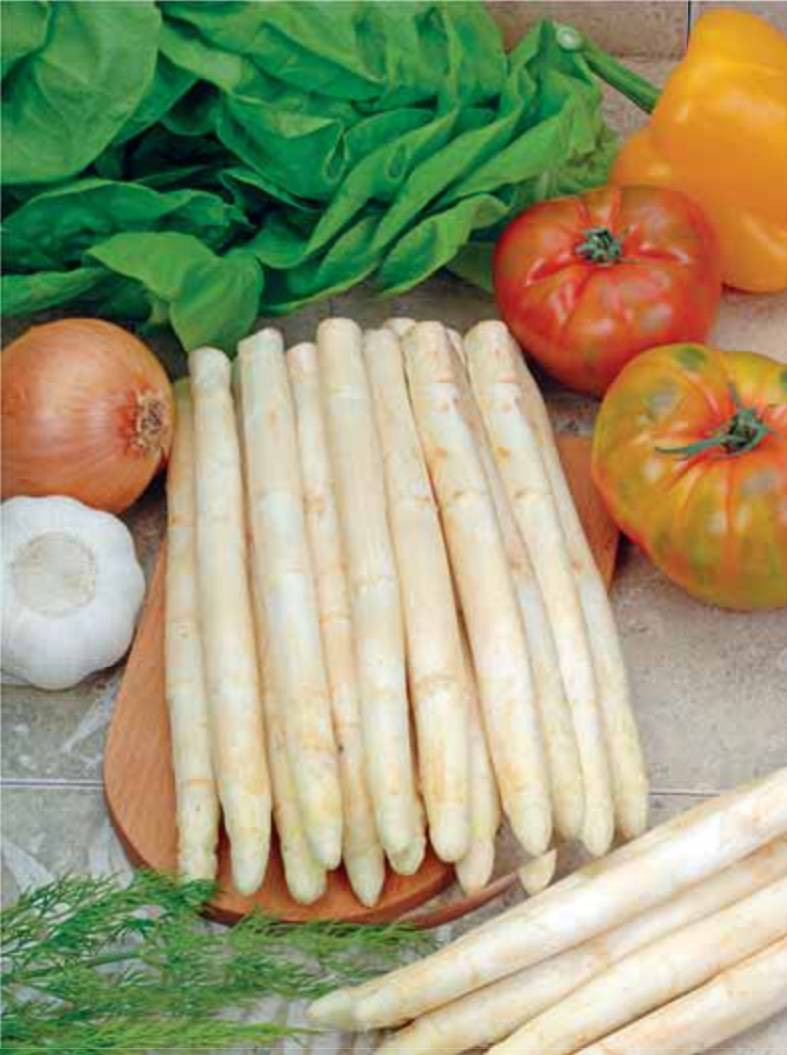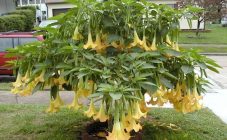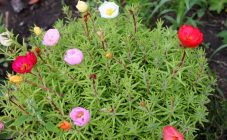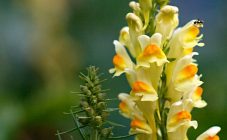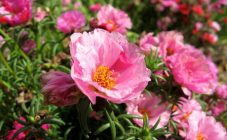Content:
This flower is unusually beautiful, majestic, but capricious. To successfully grow a healthy plant, you must adhere to the rules of seed care and planting. Store seeds do not always produce good flowers. The article will look at how to grow a delphinium from seeds.
Delphinium: growing from seeds
The difficulty is that the seeds have a short shelf life. To plant seeds collected from autumn flowering in spring, be sure to store them in the refrigerator. In a warm environment, the seed germinates in a package.
How to sow seeds outdoors
Gardeners recommend planting seeds in mid-April or early May.
Step by step guide:
- In the spring, they dig up a bed of 30 cm, fertilize with mineral complexes: peat and humus - 2 kg, wood ash - 100 grams, nitrophoska - 20 ml. If the ground is heavy, use coarse sand at the rate of 1 bucket per square meter. This will make the soil looser. 30 grams of lime is added to soil with a high acidity level. Then the plant will grow with bright flowers. Fertilizer is poured into the garden bed and the soil is dug to a depth of 30 cm.
- The land is well leveled, lumps are broken, and weeds are thrown away.
- The kidney is lightly compacted and small grooves are formed. Sprinkle abundantly with clean water. Then the seeds are distributed in an even layer and sprinkled with dry soil with a layer of 1 cm. In order for the seeds to germinate faster, to protect them from precipitation and frost, the bed is covered with a black film.
- Every day it is necessary to carry out surface watering of the beds. Airing is also mandatory. The seeds will sprout in 25 days. Only then can the shelter be removed.
Young shoots need regular watering and proper feeding. As weeds appear, they need to be removed, and the earth periodically loosened. In winter, young shoots must be covered so that they survive until spring. With the onset of winter, you can transplant seedlings to a permanent place. There they will begin to bloom.
Growing at home
The first step is to prepare the seeds. They need to be disinfected: wrap in gauze, form a bag and place in a solution of potassium permanganate for a quarter of an hour. Then rinse the seeds directly in cheesecloth under cold water.
Prepare an epin solution: 20 ml of the product per 1 liter of water. Immerse the seeds in the solution and leave for a day, then they need to be dried. Then plant the seeds in the ground in a glass and cover with foil. The substrate should consist of sand, humus, turf soil. Everything is taken by eye. You need to get loose earth that will pass air and moisture well.
How to grow delphinium shoots
When the first seedlings appear, the cups are transferred to the windowsill, the film is removed. Each container is covered with a transparent lid. The sprouts are grown in this way until they reach the lid. Once a day, remove the lid so that the seedlings are ventilated.
Water the sprouts very carefully, in a small stream.
The temperature must not be allowed to drop to +12 degrees and below.
Twice a week, seedlings are fed with fertilizer with nitrogen and phosphorus, adding 2 ampoules of Epin to 10 liters of water.
When to plant a delphinium depends on how actively the shoots grow, they should have 3 true leaves.
If the seedlings did not grow in peat glasses, but in plastic ones, they are poured with water before planting, this softens the soil. With a spatula, carefully separate the sprout together with the earth and transfer it to another pot. Do this with each seedling.
The transplanted shoots are watered after 2 days. It takes time to adapt. After 20 days, you can feed the shoots with compositions for roses or organic matter. If the top is dull, the plant needs more sun.
Delphinium grows poorly, why?
Probably, the site was poorly selected. To grow a perennial delphinium, you need to choose land in a place well protected from the wind. Since the spurs grow well in height, they can break in the wind. Cannot be planted where groundwater is close.
To increase the friability, pour in a little perlite - half a glass per 5 liters of earth. Then the mixture is heated in a water bath for one hour. This is done to kill fungal spores and weed seeds. Pour the mixture into containers, compact it a little.
The kidney should be neutral or slightly acidic. It needs to be fertilized. To do this, mix garden soil, peat, compost in equal proportions and sift to the surface. A hole is dug for the flower bed and the soil is placed in it. For better growth and development of bushes, Kemir is added to the ground.
How to plant a culture correctly
With the appearance of the first leaves, the seedlings will need to be transplanted into larger containers. Seedling boxes can be selected. It is necessary to plant up to the level of the first leaf on the stem. This must be done carefully so as not to injure the roots. Delphinium sprouts from seeds are transferred to the street after frost retreat.
They continue to grow shoots, creating a temperature regime below 20 degrees, and provide additional lighting. Seedlings are watered regularly from a spray bottle or syringe without a needle. After a few days, the soil is fertilized with potassium and phosphorus. Subsequently, feeding is carried out once a week.
In May, seedlings begin to harden. They are taken out onto the street or balcony, the residence time is gradually increased. You need to start with a few minutes, bringing up to several hours, when the seedlings get used to the rays and coolness. At night they are brought into the house. Transplanted in mid-May.
Care and cultivation
How to grow a healthy delphinium? For the first time, spurs are fertilized in the spring. To get lush flowers, a fertilizer consisting of nitrogen, potassium and phosphorus is introduced into the sprouts. Moreover, potassium and phosphorus should be more. In spring, peat is poured under the bushes with a layer of 2 cm.
As soon as the delphinium blooms, fertilizer is applied again. The second time mix 30 g of potassium, 50 g of superphosphate per 1 square meter of earth.
Watering adult spurs is necessary in a drought. Their roots are well developed, go deep into the soil. Bushes can get their own moisture, but only planted or transplanted plants need to be watered. Care must be taken so that the soil does not dry out. The soil is loosened regularly to provide oxygen and help nutrients to the soil. It is cleared of weeds, it is not allowed to be neglected.
This is enough for the flower to grow normally, without stress, to form buds in a timely manner and throw out the buds. After the plant has blooming, the wilted branches are cut off. The place of the cut is sealed with plasticine so that moisture does not get in.
Pest and disease control
The main enemy of the giants of delphiniums is powdery mildew. Most often, the plant gets sick in the summer.A white bloom appears on the leaves, which eventually turns brown. As soon as the disease is noticed, the bushes are immediately treated with a fungicide - Fundazol, Topaz.
If dark spots appear on the leaves, this indicates a black spot. This disease is difficult to identify at the beginning of development, but it is during this period that it makes sense to fight it. When the disease progresses, the plant is hardly salvageable. The causative agents of the disease grow in the soil, so the earth is disinfected. To get rid of, special solutions are used, but you can treat it with tetracycline. The mixture is prepared as follows: one tablet per 1 liter of water. Spray 2 times with an interval of 7 days.
If a bush with a black stem is found, it is immediately pulled out. For group planting, the soil should be replaced as much as possible, then sprayed with Previkur.
The personal pest of the delphinium is the delphinium fly. The insect lays its eggs on the leaves of the plant. As soon as they are found, the bushes are treated with an insecticide. Another dangerous pest is a slug. If found, they are collected by hand or set up traps. Aphids are fought with the help of insecticides, tobacco dust, garlic infusion.
To cure the bushes from fungal infections, they are sprayed with 5% Bordeaux solution. Viral infections often affect some part of the plant, so it is better to pull up the infected bush.
Many diseases arise from improper care of delphiniums and unfavorable weather conditions. For prevention, it is worth regularly removing fallen leaves, thinning the bushes when they are often sown.
Secrets of experienced gardeners and summer residents on the agrotechnics of the delphinium:
- Before sowing, sprinkle river sand on the ground with a thin layer. The seeds will be clearly visible on it, so it is easier to distribute them.
- Mulching for wintering is mandatory, you can also cover the bush with sand, and cover the cut off stem with clay.
- White spurs require more light than others. Therefore, they are placed in a bright room when the first shoot appears.
- It is not recommended to plant varietal mixes close, as the purity of the species may be lost. Temperature and the environment can affect the shade of the delphinium.
Now it is clear how to properly plant a spur from seeds. The plant is quite whimsical and capricious, it loves to be looked after. Breeding flowers is troublesome. But as soon as the first bushes appear, all the effort spent on growing them will seem empty. The garden will be immersed in the magnificent glow of delicate flowers.

